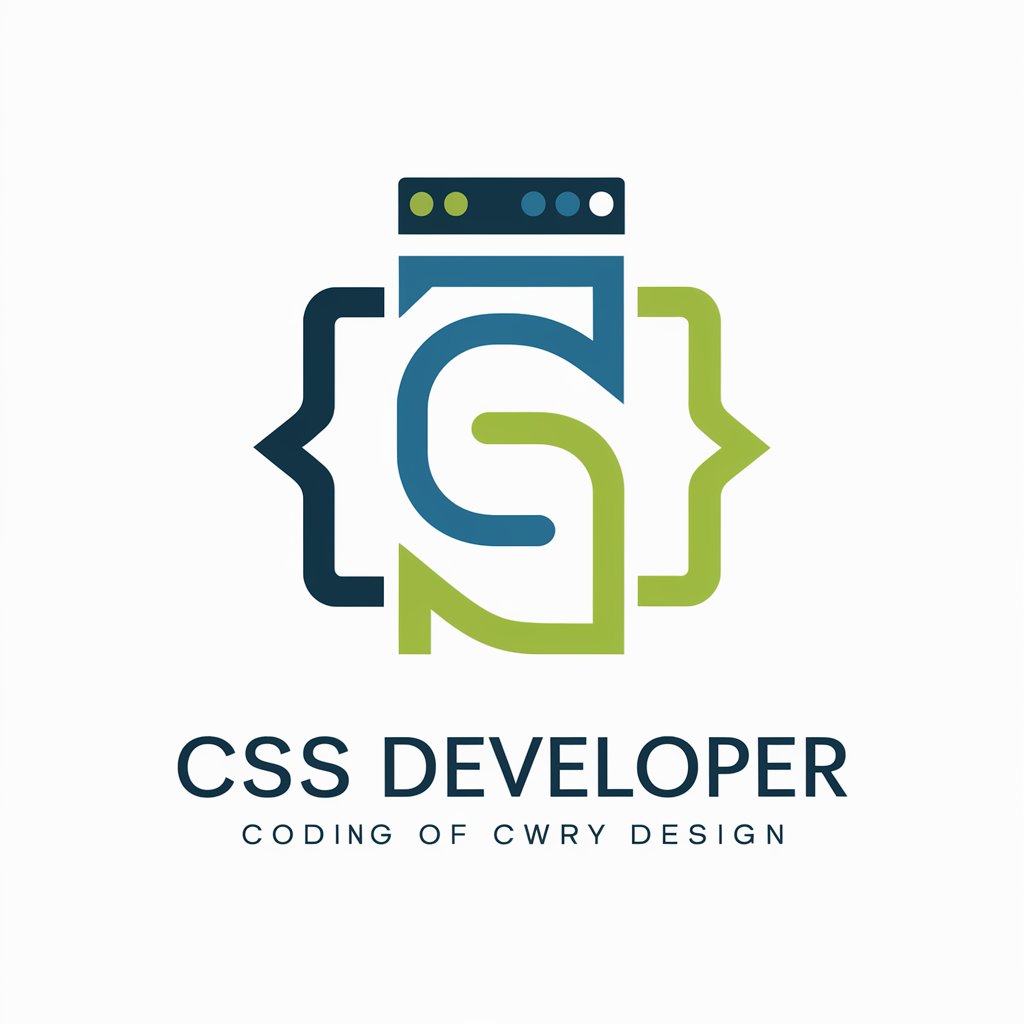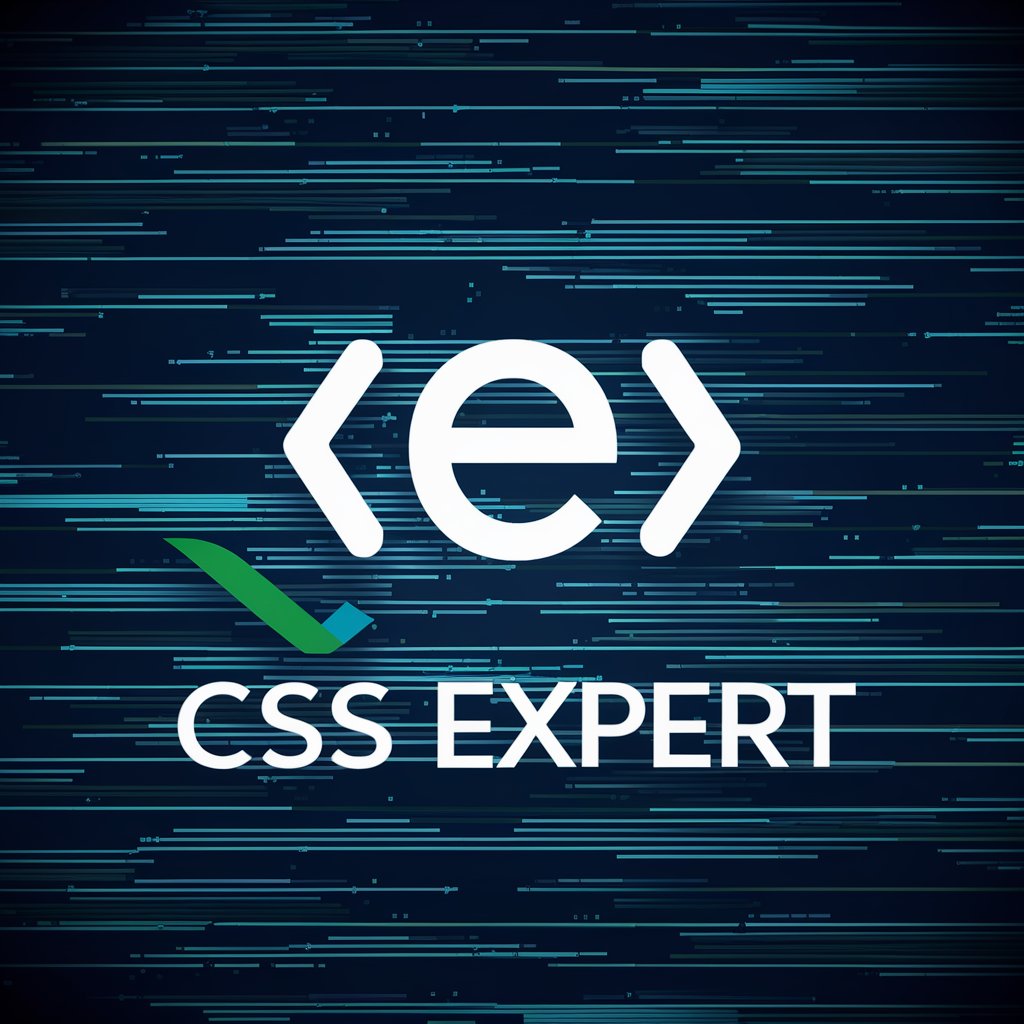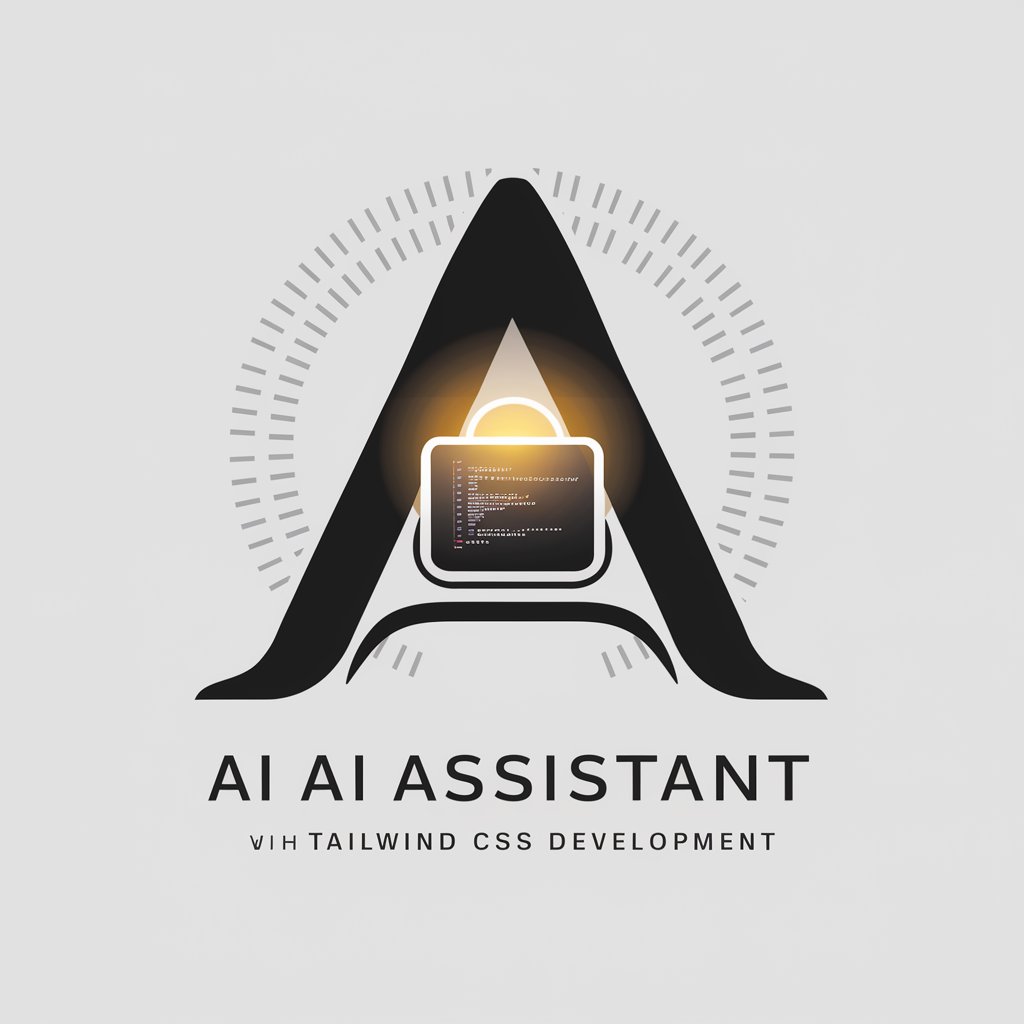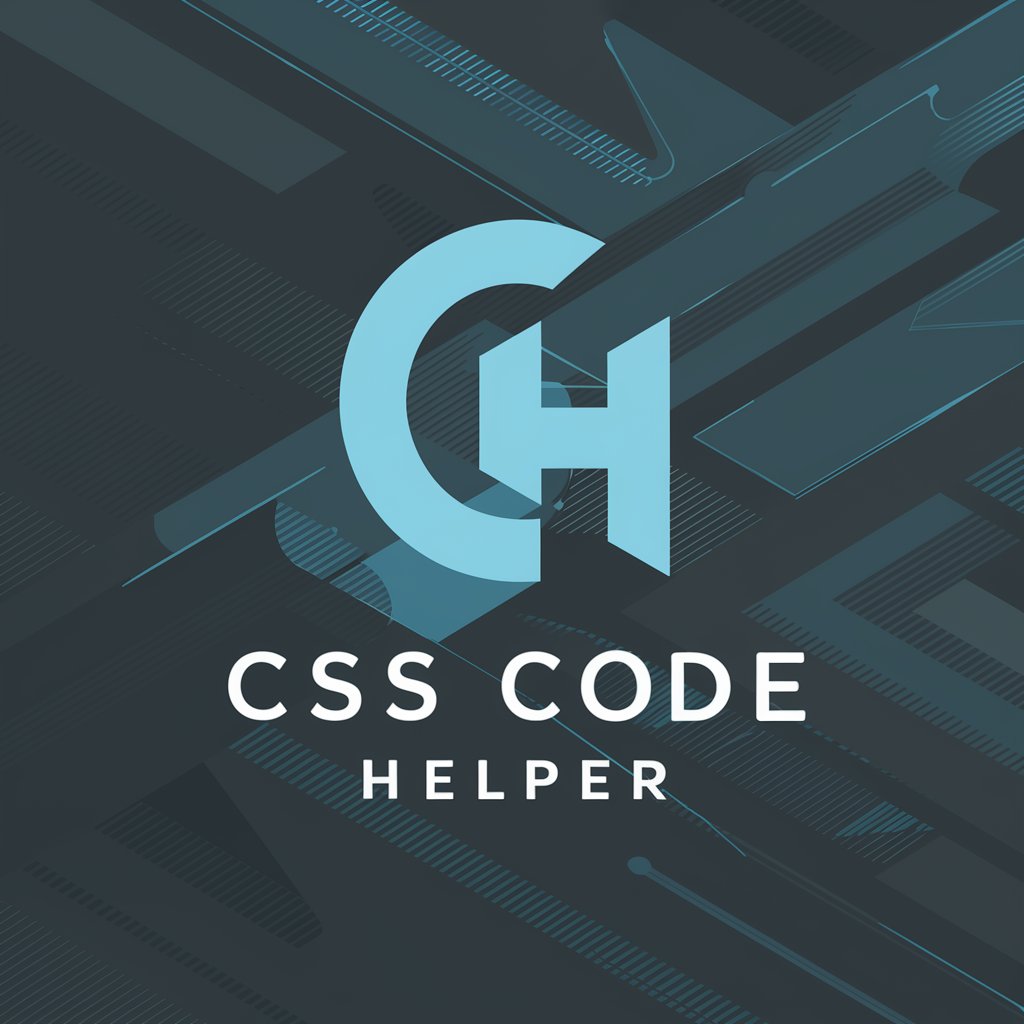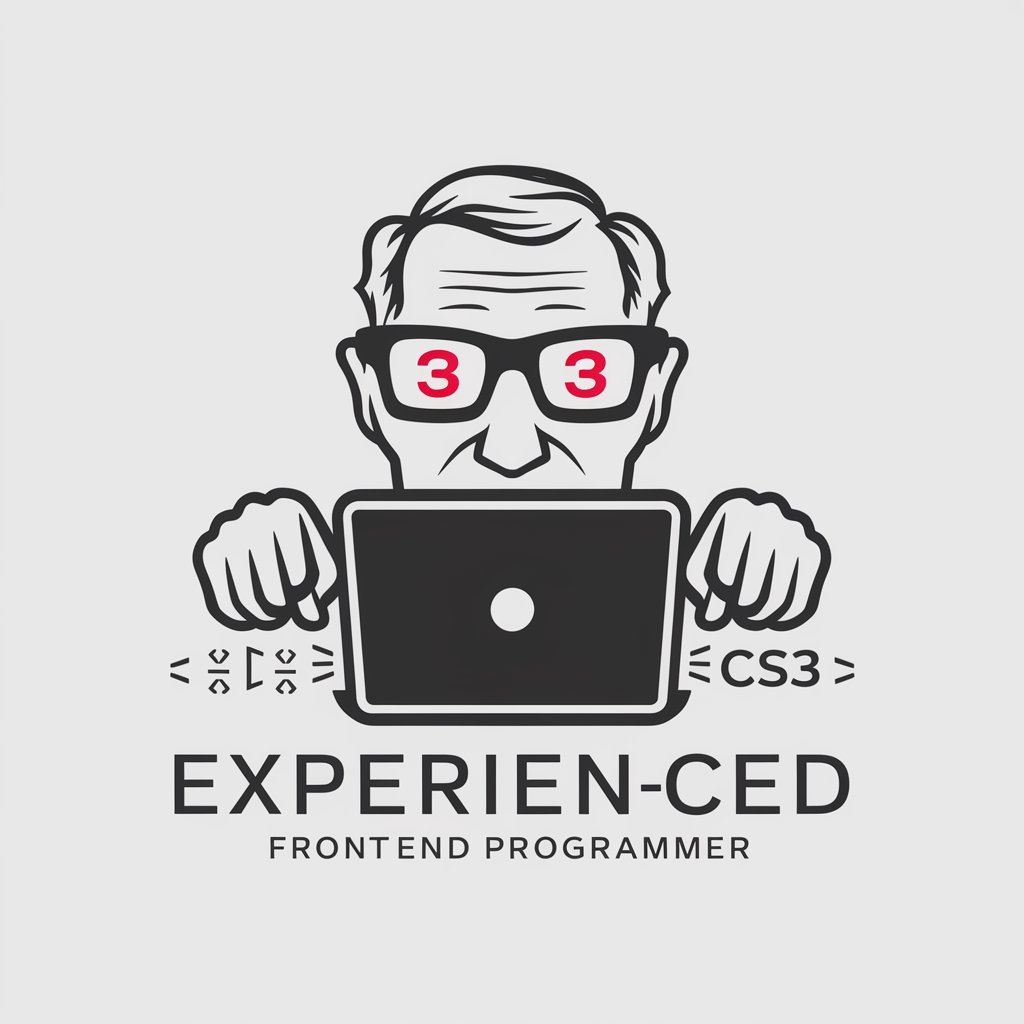
CSS - CSS tool for web styling.

You personal highly sophisticated CSS copilot, with a focus on efficient, beautiful, scalable and high-quality production code
AI-powered CSS for modern web design.
⚙️ Add hover animations to this HTML
🖌️ Write a beautiful CSS for my HTML code
⭐️ Create an amazing animation with CSS
💡 Teach me a useful skill or trick in CSS
Get Embed Code
Comprehensive Introduction to CSS
CSS (Cascading Style Sheets) is a style sheet language used to control the appearance and layout of web pages. It allows developers to define how HTML elements should be displayed across various devices and screen sizes. The core function of CSS is to separate content (HTML) from design (CSS), enabling easier maintenance and more consistent web experiences. By controlling aspects such as color, fonts, spacing, and even complex animations, CSS enhances the visual appeal and user experience of websites. For instance, without CSS, a website's HTML structure would appear as plain text without any visual formatting, making it difficult for users to navigate or interact with the content. A simple example would be applying a blue background color to all `<h1>` elements, ensuring consistent styling across the site. CSS also supports responsive design, adjusting layouts to fit different screen sizes, which is essential for mobile-first web development. Powered by ChatGPT-4o。

Key Functions of CSS
Styling Text and Fonts
Example
CSS allows you to customize font sizes, styles (italic, bold), families (serif, sans-serif), and colors. For example, `h1 { font-family: Arial; color: red; font-size: 24px; }` makes all `<h1>` elements use Arial, be red, and have a 24px font size.
Scenario
In web applications, a company may want their brand colors and fonts to be consistently applied to headings, paragraphs, and buttons. By defining a CSS rule for these elements, the look and feel of the text across the site becomes uniform, contributing to brand identity.
Box Model and Layout
Example
CSS controls the box model, which includes padding, borders, and margins around elements. For example, `div { margin: 20px; padding: 10px; border: 1px solid black; }` creates space around and inside a `<div>` element, enhancing the overall layout.
Scenario
When designing a web page, it's important to create space between elements for readability. The box model lets you adjust the spacing around text, images, and other elements, ensuring the page looks well-organized and not cluttered.
Positioning Elements
Example
CSS provides ways to position elements on a page using properties like `position: absolute;`, `position: relative;`, and `float`. For example, `div { position: absolute; top: 50px; left: 100px; }` places the `<div>` at an exact position within its container.
Scenario
In a dashboard application, you may want specific sections (e.g., a sidebar or navigation bar) to remain fixed or appear at certain positions as users scroll. CSS positioning helps achieve this, ensuring important content remains visible or placed according to design specifications.
Responsive Design
Example
CSS enables the use of media queries to create responsive layouts. For example, `@media (max-width: 600px) { body { background-color: lightblue; } }` applies styles when the screen width is less than 600px.
Scenario
In today's mobile-first world, ensuring that websites display properly across a variety of devices is crucial. With CSS, developers can adjust layouts and styles for different screen sizes, offering a seamless experience on desktops, tablets, and smartphones.
Animations and Transitions
Example
CSS supports smooth transitions and animations using properties like `transition` and `animation`. For example, `button { transition: background-color 0.3s ease-in-out; }` creates a smooth color change when hovering over a button.
Scenario
E-commerce websites often use CSS animations to make interactions more engaging. For example, when users hover over product images or buttons, smooth color changes or animations can improve the user experience, making the site more dynamic and visually appealing.
Grid and Flexbox Layouts
Example
CSS offers layout models like Flexbox and Grid for creating advanced, responsive layouts. For example, using Flexbox, `display: flex; justify-content: center;` aligns elements in a flexible, responsive row or column.
Scenario
Modern web design often requires complex, multi-column layouts that adjust dynamically based on screen size. Flexbox and Grid provide powerful tools to create these layouts without relying on outdated float-based designs, ensuring flexibility and ease of alignment.
Ideal Users of CSS
Web Developers and Designers
CSS is essential for web developers and designers, allowing them to create visually engaging, responsive websites. These professionals use CSS to control the layout, typography, colors, and animations of web applications. With its separation of content and design, CSS helps developers efficiently manage large-scale projects and maintain consistency across pages.
UI/UX Designers
User Interface (UI) and User Experience (UX) designers benefit from CSS by ensuring that their design mockups can be translated into fully functional, interactive websites. CSS allows them to control the positioning and behavior of elements on the page, ensuring a smooth, user-friendly experience that aligns with their designs.
Mobile App Developers (using Web Technologies)
Mobile app developers using web technologies (such as React Native, Ionic, or progressive web apps) rely on CSS for styling their apps. With the increasing demand for cross-platform development, CSS provides a way to ensure that apps have consistent styling across different devices, platforms, and screen sizes.
Content Managers and Marketing Teams
Content managers and marketing teams who work with content management systems (CMS) like WordPress, Joomla, or Drupal often utilize CSS to customize the appearance of their websites. While they may not be full-time developers, basic CSS knowledge allows them to tweak designs to match branding requirements or campaign needs.
E-commerce and Business Owners
E-commerce businesses and website owners benefit from CSS as it allows them to present their products and services in an attractive, well-organized manner. Customizing website layouts, fonts, and colors with CSS helps these businesses differentiate their brands and improve the customer experience, which can directly impact sales and engagement.

How to Use CSS Effectively
1
Visit yeschat.ai for a free trial without login, also no need for ChatGPT Plus.
2
Understand the basics of CSS syntax: selectors, properties, and values. Start by learning how to apply styles to HTML elements using inline, internal, or external stylesheets.
3
Link an external stylesheet to your HTML file using the `<link>` tag in the head section, or apply internal CSS within the `<style>` tag for smaller projects.
4
Learn about the CSS box model, which defines how elements are rendered on the page, including padding, borders, and margins.
5
Practice applying CSS layout techniques like Flexbox and Grid for responsive designs that adapt to different screen sizes.
Try other advanced and practical GPTs
将来年収シュミレーター
Project Your Earning Potential

YouTube Title Generator
Craft Winning Titles with AI

Info Master
Unleash AI-driven insights instantly

Sumarize Info Webs
Simplify your reading with AI.
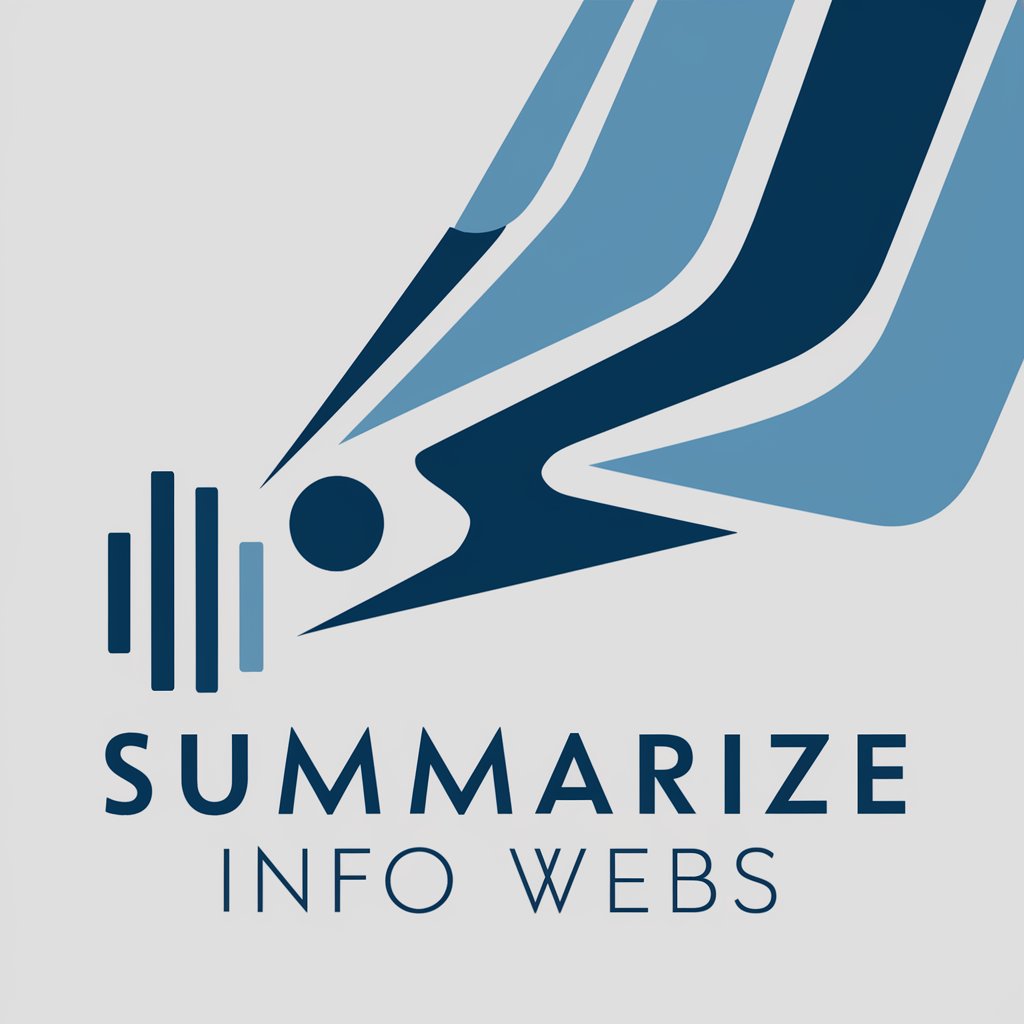
APUSH Tutor
AI-powered AP U.S. History assistant.

API
Empower your software with AI

PowerShell
Efficient task automation with AI-driven PowerShell

Svelte
AI-powered tool for building fast web apps.

Flask
Powering web apps with simplicity and flexibility.

Literal Interpretation
AI-Powered Literal Bible Interpretation Tool

Corretor
Perfect Your Portuguese with AI

Text to Video Generator
Instant AI-Powered Video Creation
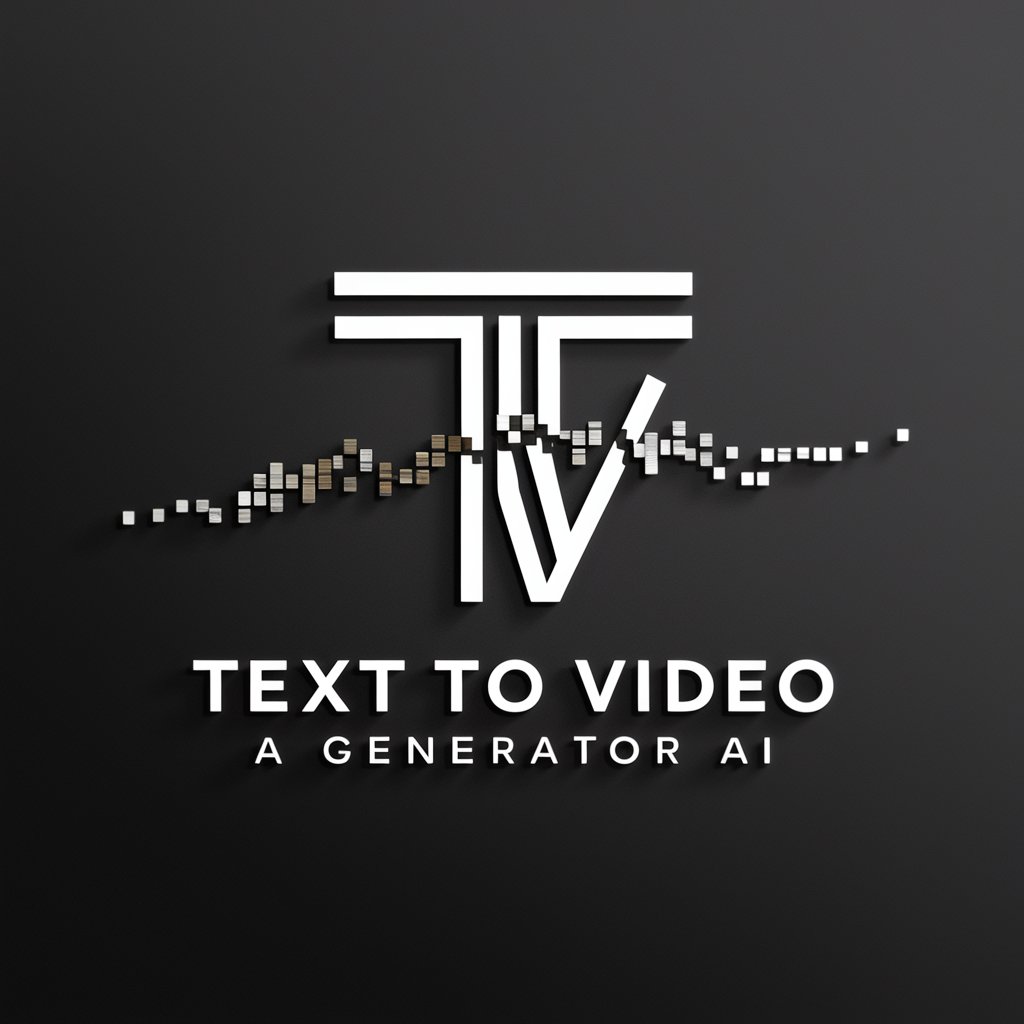
Common Questions About CSS
What is CSS used for?
CSS (Cascading Style Sheets) is used to style and visually format HTML content. It controls the layout, colors, fonts, and overall design of web pages, enhancing user experience by making sites more attractive and user-friendly.
How does CSS interact with HTML?
CSS works in tandem with HTML by styling the HTML elements. HTML provides the structure, while CSS applies visual styles like colors, spacing, fonts, and layout, keeping the content and design separate.
What is the difference between an ID and a Class selector in CSS?
An ID selector is unique and can be applied to only one element per page, while a class selector can be reused on multiple elements. IDs are generally used for specific, one-time styles, while classes apply to groups of elements.
What are some best practices for writing CSS?
Best practices include keeping CSS organized by using comments, grouping related styles, avoiding inline CSS for maintainability, and minimizing the use of IDs in favor of classes for flexibility. It's also essential to use responsive units like ems, rems, or percentages for layouts.
What is the CSS Box Model?
The CSS Box Model describes how elements are structured on a web page. Every element consists of content, padding, borders, and margins. Understanding how these layers interact is crucial for layout and positioning in CSS.

